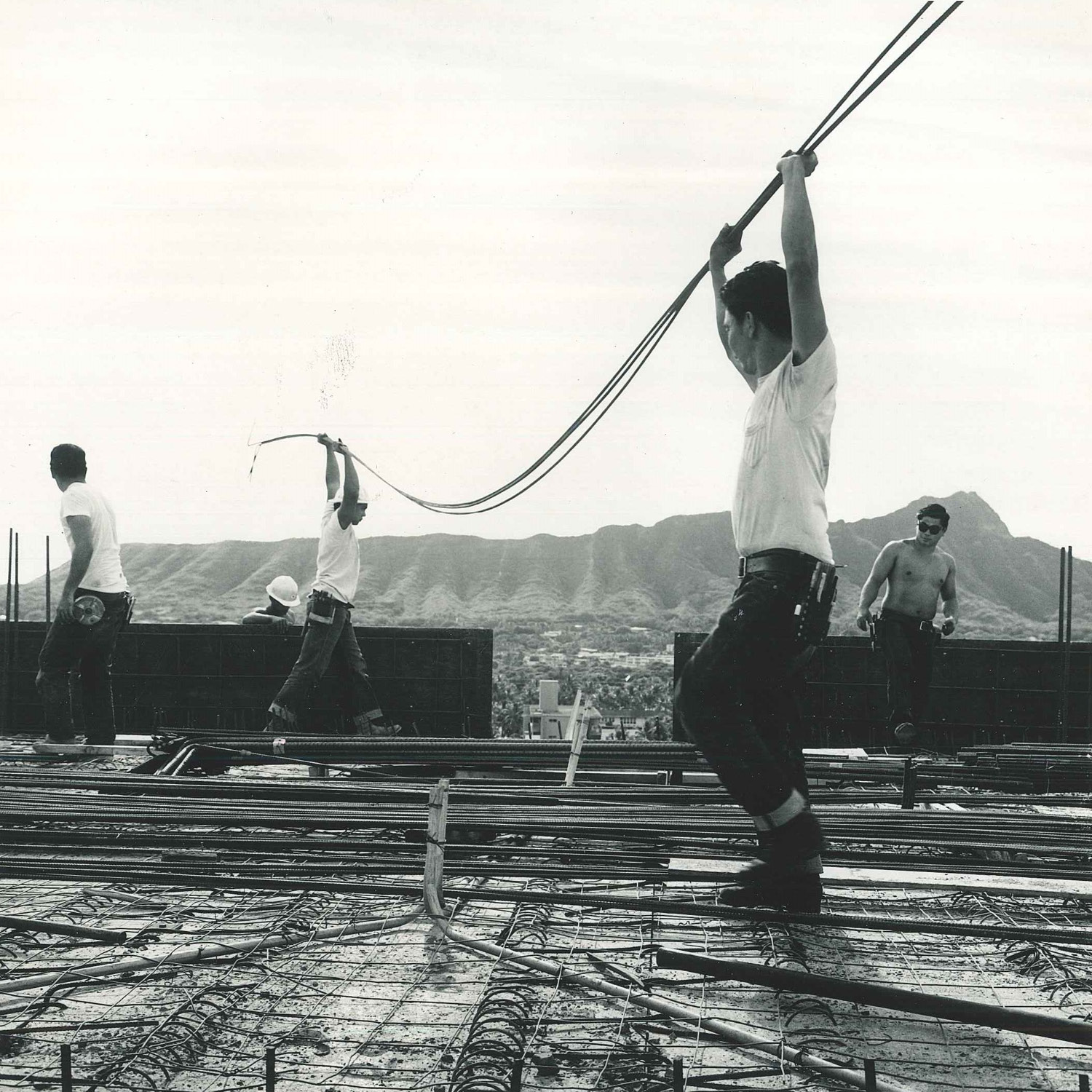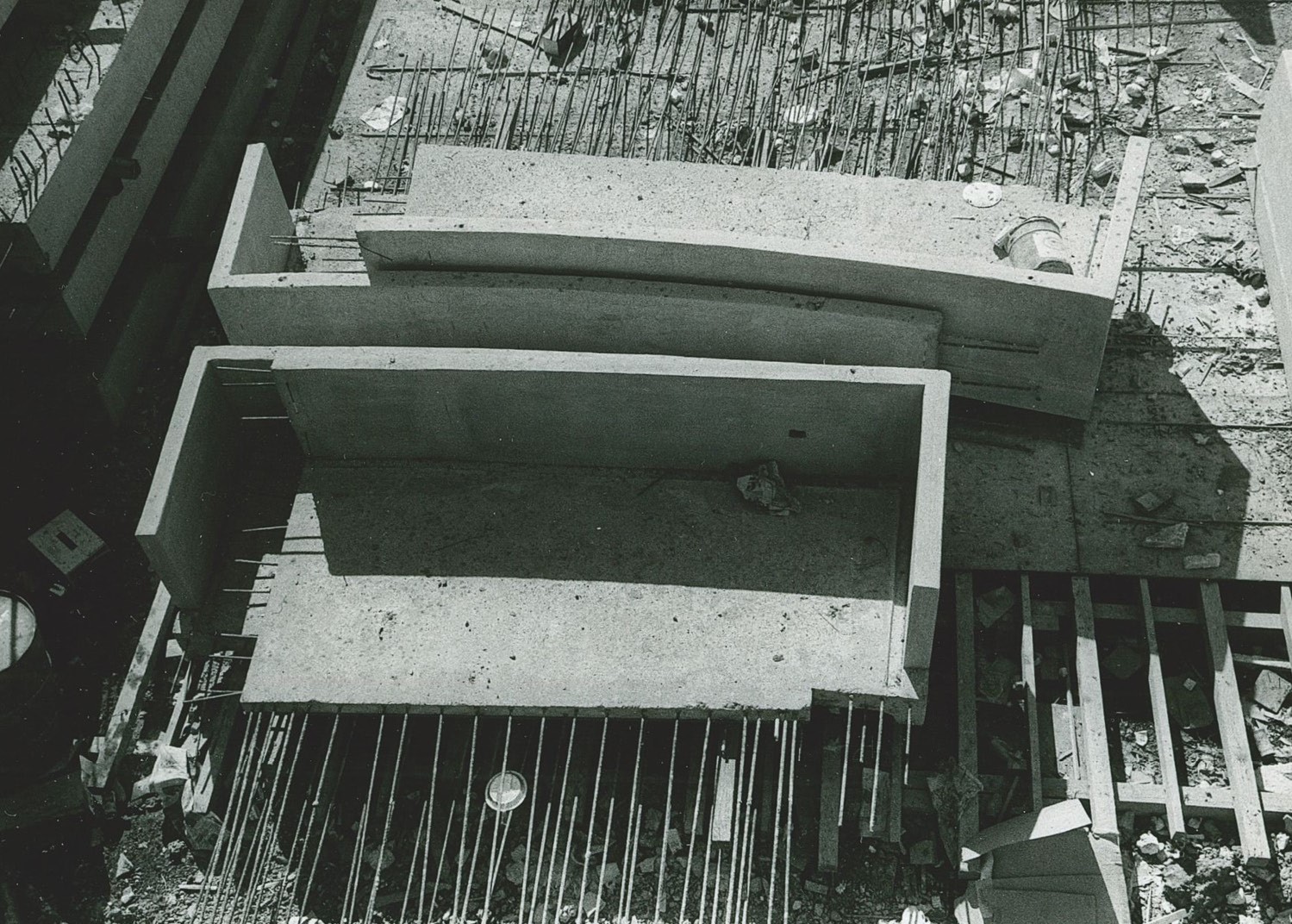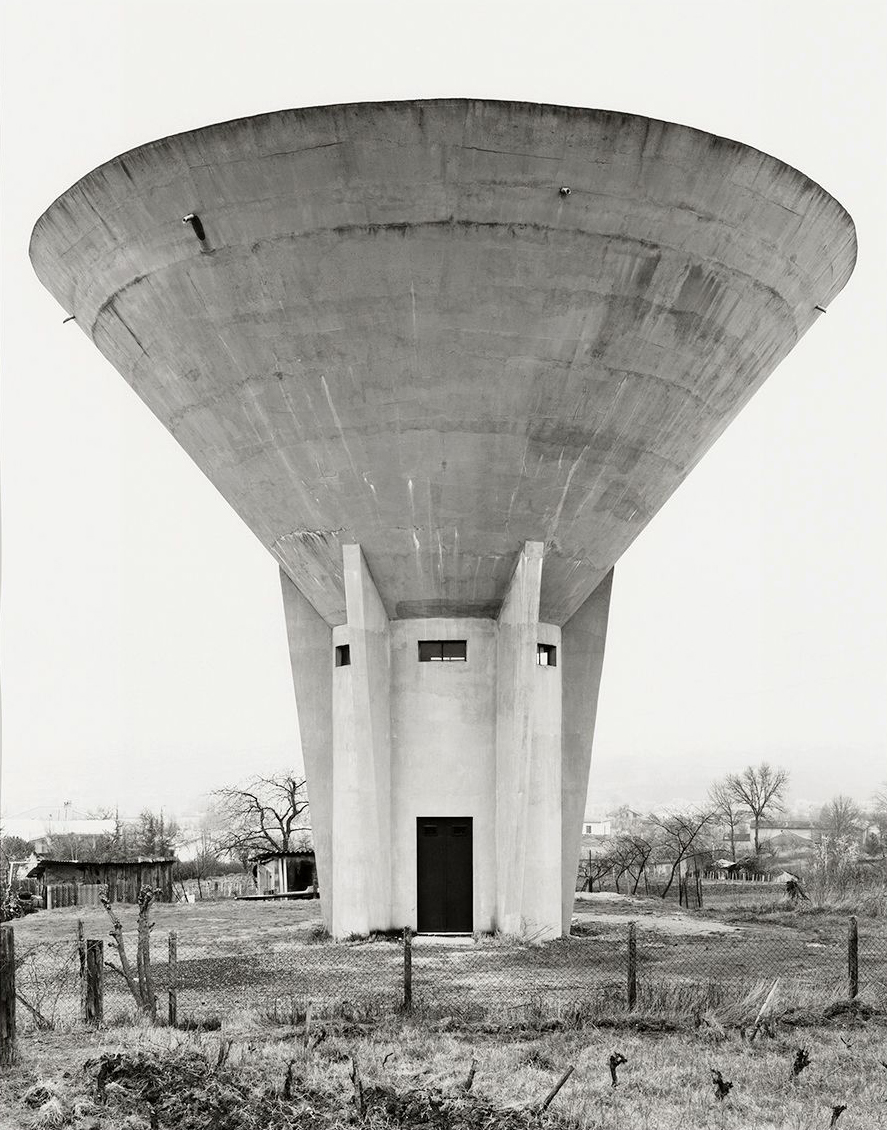ALFRED A. YEE
Perspective: Photography
GAYE CHAN
Gaye Chan is an artist and a professor of photography in the Department of Art and Art History at the University of Hawaiʻi at Mānoa.
My father Eric Hong Ching Chan was a structural and civil engineer, along with being an amateur photographer and cinematographer. When my siblings and I were children, he held screenings for us of the super 8, black-and-white films that he made at his construction sites. The films mostly documented the fabrication of forms to cast concrete, followed by the pouring of cement, precast or in situ.
I was immediately reminded of these screenings when Bundit Kanisthakhon (curator of this exhibition) showed me the photographic documentation of Alfred Yee’s building sites. The photographs are beautiful. They were made with medium- to large-format cameras, and are carefully composed and stunningly rich in detail due to the size of the negatives. Some of the photographers are credited on the back of the prints—Robert Wenkam, Julius Schulman, Camera Hawai‘i, etc. The bulk of them, however, are anonymous.
Stylistically, many images evoke important works in photographic history, in particular those by Lewis Hine and Bernd and Hilla Becher.
I was immediately reminded of these screenings when Bundit Kanisthakhon (curator of this exhibition) showed me the photographic documentation of Alfred Yee’s building sites. The photographs are beautiful. They were made with medium- to large-format cameras, and are carefully composed and stunningly rich in detail due to the size of the negatives. Some of the photographers are credited on the back of the prints—Robert Wenkam, Julius Schulman, Camera Hawai‘i, etc. The bulk of them, however, are anonymous.
Stylistically, many images evoke important works in photographic history, in particular those by Lewis Hine and Bernd and Hilla Becher.


Left: Empire State Building. Lewis Hine. 1930s
Right: Ilikai Hotel. Robert Wenkam. 1963
Right: Ilikai Hotel. Robert Wenkam. 1963


Left : First National Hawaiian Bank. Camera Hawaii. 1961
Right: Ala Moana Hotel, Alex Williams. 1972
Right: Ala Moana Hotel, Alex Williams. 1972
Lewis Hine (b.1874) was a sociologist and employed photography as a tool for social reform—lobbying against brutal labor practices. His early 1900s portraits of children working in factories were instrumental in changing child labor laws in the United States. The images most similar to those made at Yee’s building sites are those Hine produced at the construction of the Empire State Building. Hine pictured workers as the center of 20th century modernization. While there is no way to know if Yee’s photographers were aware of Hine’s work, there is no doubt they were aware of Yee’s innovations in cast concrete. At times, they pictured Yee’s concrete forms as though they were weightless, deftly maneuvered and anchored in place by the workers.
Yee’s photographic archive also evokes the work of the collaborative team Bernd (b. 1931) and Hilla (b. 1934) Becher, considered by some scholars to be the most influential German photographers of the post-war period. Over 50 years the duo documented the aesthetic of disappearing industrial facilities, bringing attention to the overlooked structures for the first time. They produced extensive typologies of water towers, grain elevators, coal mines and steel mills. Like the Beckers, Yee’s photographers also pictured his cast forms simultaneously as sculptures and social artifacts.
Yee’s photographic archive also evokes the work of the collaborative team Bernd (b. 1931) and Hilla (b. 1934) Becher, considered by some scholars to be the most influential German photographers of the post-war period. Over 50 years the duo documented the aesthetic of disappearing industrial facilities, bringing attention to the overlooked structures for the first time. They produced extensive typologies of water towers, grain elevators, coal mines and steel mills. Like the Beckers, Yee’s photographers also pictured his cast forms simultaneously as sculptures and social artifacts.


Left : Marco Polo Condominium. James Y. Young. 1970
Right : First National Hawaiian Bank. Camera Hawaii. 1961
Right : First National Hawaiian Bank. Camera Hawaii. 1961

Water Towers. Bernd and Hilla Becher.
This Alfred Yee exhibition is a must see for photography students and enthusiasts. I only wish I could see it with my father to make up for not fully appreciating his films as a child.